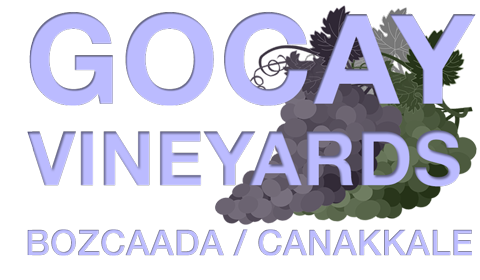“Bozcaada
Bozcaada, which is located in the province borders of Canakkale on the north of the Aegean, is Turkey's third largest island with its unique sea, and soothing landscape and is a very interesting location with nostalgic structures separated as Turkish and Greek and its mythological history.
“History
Bozcaada, which was called as Leukophrys in ancient times and Tenedos in the Greek mythology, has been invaded and transferred many times during the ages due to its strategic position. As it is understood from the excavations made in the necropolis field on the island, it is about 3000 years old. The first inhabitants of the island are Pleasgs who are thought to have settled in the island in B.C. 2000s and was a branch of Akals. Then Phoenicians, Athenians, Greeks, Persians, Alexander the Great, Byzantines, Genoese, Venetians and Ottomans, respectively, dominated the island.
Bozcaada firstly participated in the Ottoman Empire during the reign of Fatih Sultan Mehmet in 1455. After different names, it took the name of Bozcaada which means "gray colored".
“Bozcaada in the Mythology
The Lord of the Sea was a king named Kyknos who was one of the children of Poseidon. On the north of Beycayiri, the Miletus colony in the Lapseki district ruled the city of Colonai. He had a son named Tenes too. When Tenes' mother died, his father got married again. However, the stepmother had a slander against Tenes. Moreover, she found herself a "pilgrim" as a false witness.
King Kyknos believed this slander and put his son in a boat and threw him to the sea. The ark went swimming, hitting the coast of Leukophrys Island through the Bosphorus. According to famous geographer Strabon, Tenes settled in the island after hiding here and changed the name of Leukophrys Island, which was called Kalydna by some, to Tenedos which meant "Tenes Island" (two small islands in the north-west of Bababurun, which form the northern end of the Gulf of Edremit were called Kalydnai).
Regarding Father Kyknos, after a while, he understood that it was a slander. However, Tenes made the ship go by cutting the ropes connecting his father's ship to the shore. In addition, he made it forbidden for the pilgrims to come to the island, because there was also a "pilgrim" in the slander...
“Bozcaada is famous for its wine grapes and wines.
Viniculture and Winery is the heritage of the past that has reached the present day with the accumulation of 3000 years. The grape clusters on the Tenedos coins dating back to the 5th century BC prove how deeply rooted the vineyard is on this island in many written sources from the Iliad of Homeros to the travels of Evliya Celebi.
Most of the island is covered with vineyards. Gocays started vine growing 30 years ago and they have an area of 1015 acres in the Habbele and Ova areas. There are also sales outlets in the center of the island.
Çavuş grape of Bozcaada is Turkey's best grape.
“Island vineyards
The fact that the Aegean Sea is located at the exit of the Dardanelles affects the climate as well as its historical importance. The fact that it is open to the north winds from the Bosphorus alongside the Mediterranean and Thracian climates creates a different climate effect on the island. These climatic conditions peculiar to the island make the character of the grape more distinctive and personal. The traditional grape varieties grown in Bozcaada are white Vasilaki and Çavuş, black Kuntra (Karasakız) and Karalahna.
In recent years, international varieties of grapes such as Cabernet Sauvignon, Merlot, Syrah have also been grown in Gocay vineyards. The main vineyards of the island are Çayır region in the northern coasts, Ova region in the western and northern coasts and Habbele valley. Apart from traditional viticulture, newly planted vineyards are formed as wire and high system. There are no irrigation in the vineyards and the protection is very close to the organic vineyard. In addition, a new project related to the island's transition to organic packaging is being carried out by the Ministry of Agriculture. It is a great advantage that the island's past, vineyard techniques, climate and all its geographical features and grapes have their own unique structure in this period, which is very important for the concept of terroir and the effects on the wine all over the world.
In Bozcaada, the vintage begins with white grapes on August 15 and continues until mid-October.
“Bozcaada & Scuba Diving
Bozcaada is one of the most important diving points of the Aegean Sea. Visibility is 50-60 meters long due to clean sea. It is advised to do diving with a 7mm dress even in hot summer months to avoid problems during diving due to the cold water. There are various diving centers on the island.
